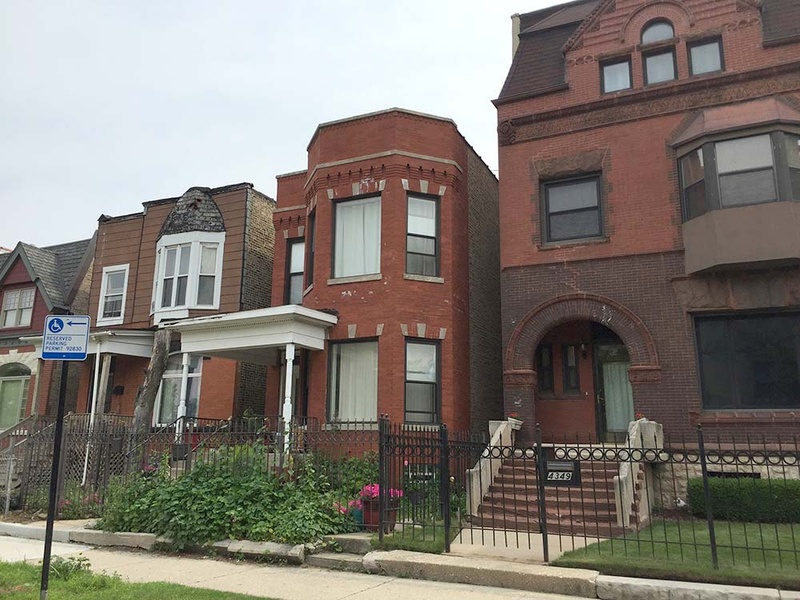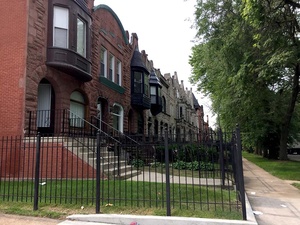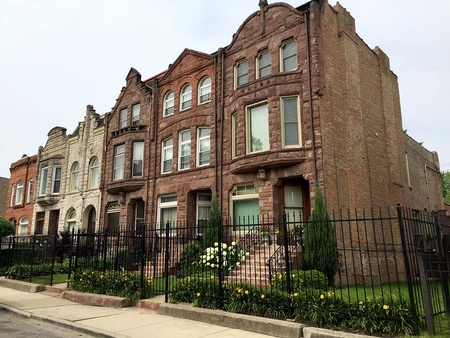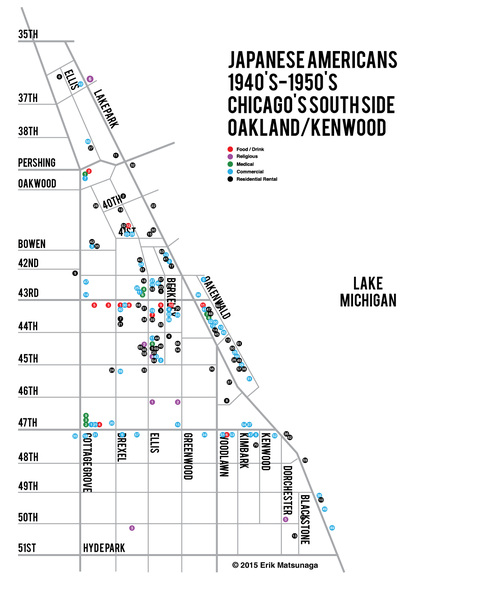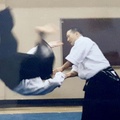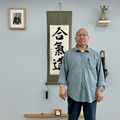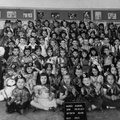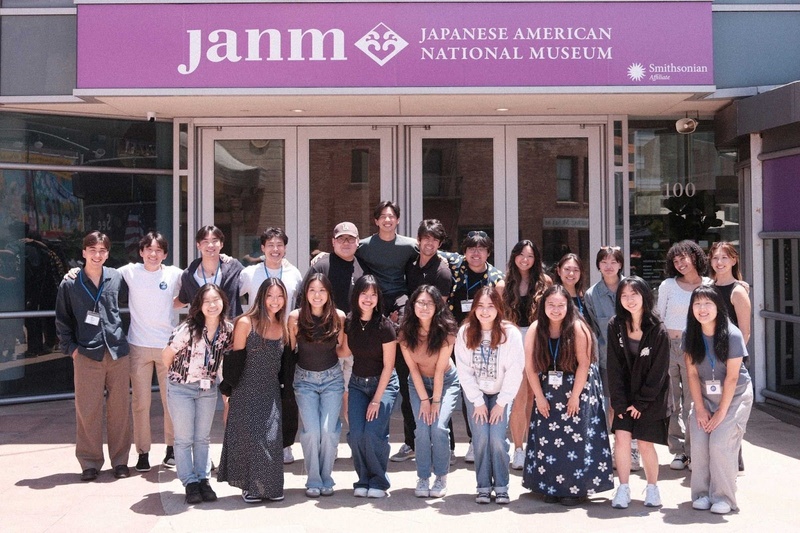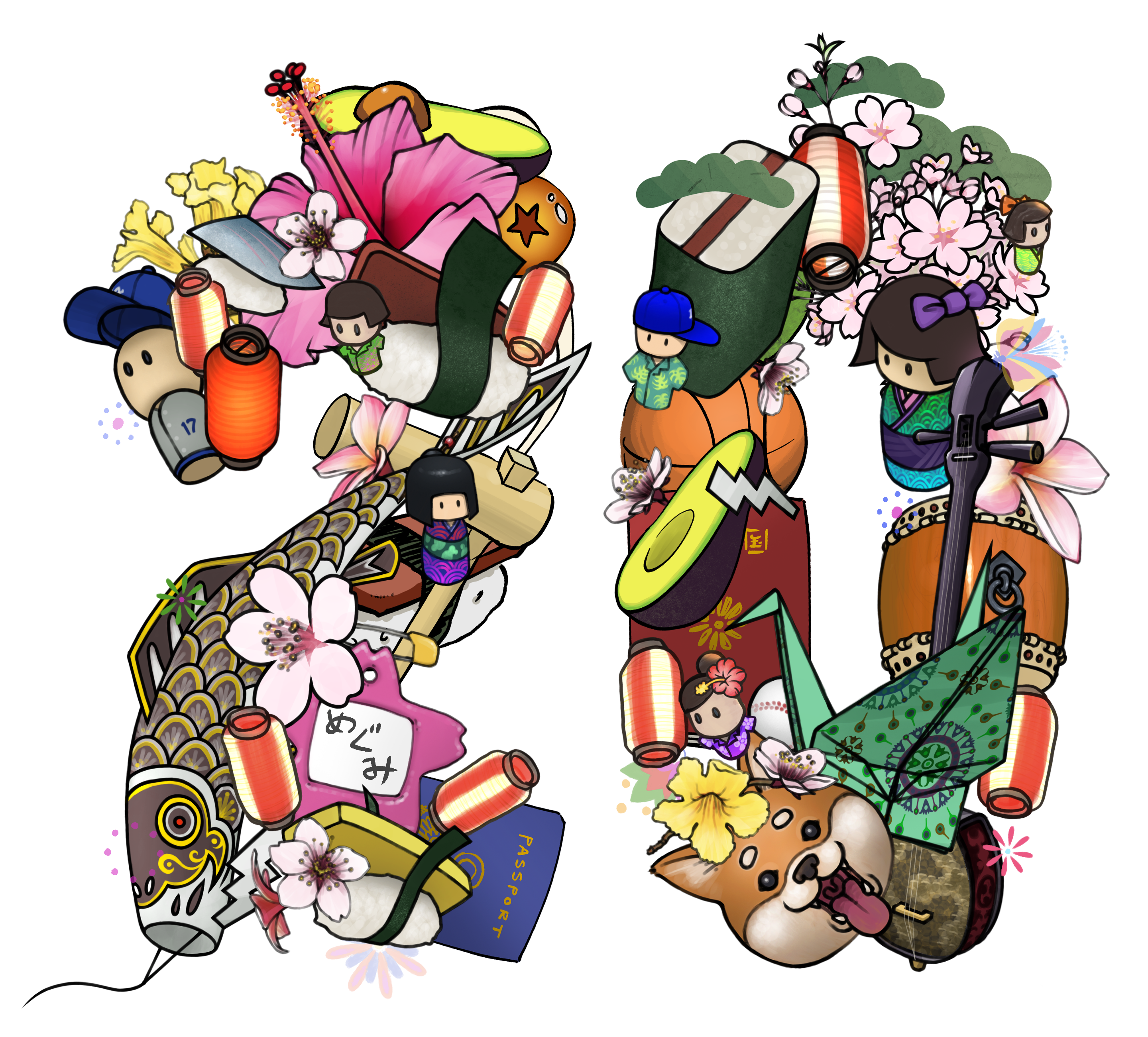Fred Yamaguchi: That was like Japantown. 43rd and Ellis.
Karen Kanemoto: But now, I don’t think there are any Japanese Americans down there.
Yamaguchi: I don’t think so.
Kanemoto: It’s kind of like a lost history, and I think it’s important to document it.—Excerpt from an interview of Fred Yamaguchi by Karen Kanemoto
As a result of Executive Order 9066, in 1942 some 120,000 persons of Japanese ancestry—two-thirds of whom were American citizens by birth—were forcibly removed from their homes on the West Coast and incarcerated in various concentration camps across the interior of the United States.
From that time until the War Department rescinded exclusion orders, bit by bit Japanese Americans were filtered out of the camps through work and education release programs, wherein many, disallowed to return to the West Coast, relocated to the Midwest and East Coast. Chicago became a destination city due to its bevy of opportunities and relative racial tolerance compared with the prevalent sense of “Yellow Peril” on the West Coast, which predicated the mass hysteria leading to their unjust incarceration.
From a pre-war count of roughly 400, Chicago’s Japanese American population swelled to some 20,000 by 1945. Three neighborhoods became the focal point of this early resettlement: the Near North Side centered around Clark & Division Streets, and the contiguous Oakland and Kenwood communities centered at 43rd & Ellis.
Of note is that in this transitional area of resettlement, although there were commercial thoroughfares, many Japanese American businesses of the time, as well as cultural and religious institutions, were based out of residences.
The Oakland/Kenwood community later bled southward into the neighborhoods of Hyde Park, Woodlawn, and South Shore, while much of the Near North community spread northward into Lakeview, Uptown, and Rogers Park. Today, whereas the North Side maintains residential, commercial, cultural, and religious remnants of the post-war community, there exists nary a trace of the once expansive Japanese American presence on the South Side.
The companion map (below), the second in a series denoting historic Japanese American neighborhoods in Chicago and the first of its kind outlining this particular community, plots 155 points in the Oakland/Kenwood area of Chicago’s South Side from the 1940s-1950s. (Read about the first map project.) While extensive in points derived from Japanese American commercial directories of the time, it is not all-encompassing as many more private residences dotted the landscape among those listed.
Special thanks go to Karen Kanemoto, former longtime Legacy Center Archives manager at the Japanese American Service Committee, for her support, encouragement, and assistance in aggregating the materials necessary to develop this series of historic maps, beginning with “30 Years of Lakeview: Chicago’s Japanese American Community 1960s-1990s.”
According to former residents:
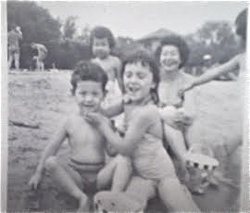
Courtesy of Mariko Ventura.
I was born in Kyoto of an American father, Charles Ventura from Chicago, and a Japanese mother, Teruko Fujiki, and resided in the South Side community of Kenwood from 1953 until 1959. It was in the earlier years where there was the highest concentration of Japanese in that neighborhood, when we lived at 4958 South Blackstone from 1954 to 1956 in a building across the street from Kenwood Grade School (today, it is Miriam G. Canter Middle School).
The brownstone apartment rental units were operated by Mr. and Mrs. Tanaka. She was Nisei, and he was Issei, several years older. Was he her husband or father? This remains a mystery. Living in these apartments were recently released Japanese Americans who were interned and released far from their West Coast properties, Japanese war brides, Japanese American students attending University of Chicago, Appalachian families, Native Americans, and Puerto Ricans. The rent was cheap and the atmosphere friendly.
We shopped at Fuji Grocery store ’til they moved to “Clock-ru Street” (as my mother would say) on the North Side, then Franklin Food Store (I remember they were from Hawaii and Americanized their Japanese name). Franklin Food store was in Hyde Park well into the1970s; my parents would travel there from the Far North suburbs before Mitsuwa was built in the Northwest suburb of Arlington Heights, and before tofu became an American household staple.
We lived in Kenwood in the early ’50s because my mom and I were newly arrived Japanese-speaking Army dependents; the 5th Army Division was a few blocks away and the Korean War was just winding down. My father was about to be assigned on a tour of duty as that war was ending, and his concern was for his wife and daughter to be around the culture we just left behind in Kyoto in 1952. Sadly, he had to leave us for his tour one week after my brother, Junior, was born. I was in kindergarten and didn’t speak English, but at that age was able to learn quickly and came home to help my mother along with her own English.
The community of Japanese, then, helped each other. I know this through the connections my mom made, the Japanese students attending University of Chicago who would translate my dad’s letters for my mother, and she dictating letters back in Japanese to be translated by them to English to send off to my dad. They were there to study law and medicine. Their names are etched in my mind…the Moriharas and the Katos.
Then there was the Japanese War Brides Club. As I recall, a few other war brides lived in our building and nearby apartments. I would accompany my mom to their meetings at the Buddhist Temple on Dorchester Avenue, founded by the Rev. Kubose (which later moved to Leland Avenue on the North Side). The War Bride’s Club put on a review in 1955. I remember attending rehearsals and among the women was a Japanese classical dance artist who performed and a Gaijin husband did a stand up comedy routine. I ran around the backstage with a newly found friend as my mom sat in as a greeter.
The Tanakas may have had the only telephone available to their Japanese tenants in 1954. The first year my dad was in Korea he had a Rest and Relaxation break in Kyoto. He and my aunt called long distance from Japan, and we spoke with them. Tanaka-san also hosted a New Year’s feast for their preferred tenants, and I remember as a six year old marveling at the low table beautifully set with Japanese style dishes. Never will I forget these precious moments of generosity and camaraderie.
—Mariko Ventura, former resident
|
FOOD/DRINK
RELIGIOUS
MEDICAL
COMMERCIAL
RESIDENTIAL RENTALS
|
© 2015 Erik Matsunaga


